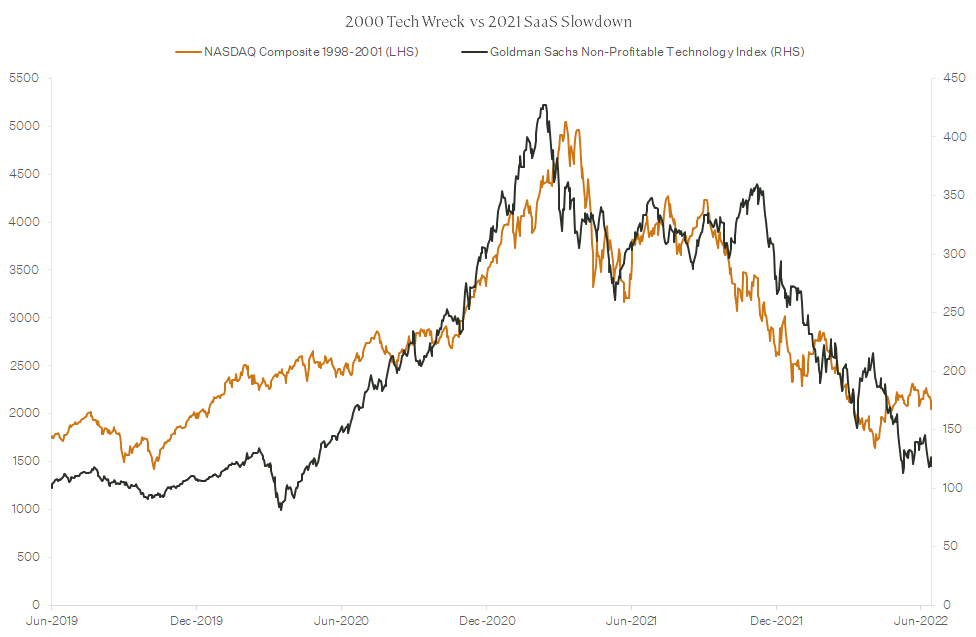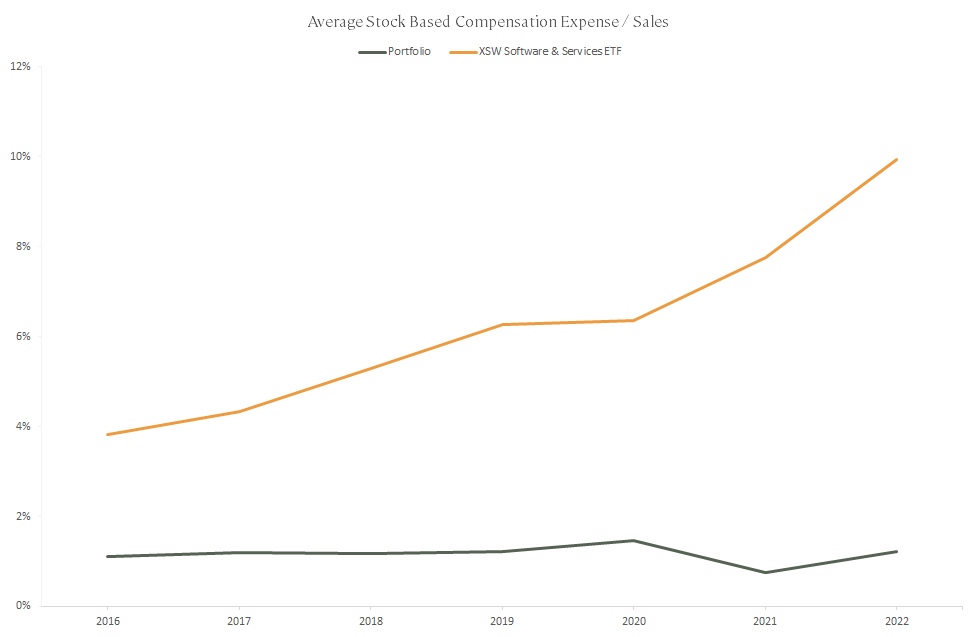A CFO Conspiracy
Understandably, investors are attracted to growth stories which are often associated with exciting narratives about the future. Who doesn’t like a business growing revenue 30% per annum? Unfortunately, top line results often fall short when delivering on what ultimately matters to investors – long term earnings per share growth.
Attractive narrative
For those investing in 2011, you may recall the famous quote by famed technology investor Marc Andreessen. “In short, software is eating the world”. He went on to explain that “too much of the debate is still around financial valuation, as opposed to the underlying intrinsic value of the best of Silicon Valley's new companies. My own theory is that we are in the middle of a dramatic and broad technological and economic shift in which software companies are poised to take over large swathes of the economy.”
With the success of Google, Amazon and Microsoft, it’s difficult to argue otherwise. We are not going to – we happen to quite like technology companies.
However, success often breeds contempt – and in many cases it’s the newer unproven technology companies that are displaying this unattractive trait. Unfortunately for investors, this contempt is directed not at competitors but at shareholders who are increasingly finding that the fruits of an attractive top line are increasingly accruing to employees rather than owners.
Skills shortage meets business model
While the business models for technology businesses are attractive, the input costs (labour) have been accelerating as demand for developers has vastly outstripped supply over the past decade. Globally, some 40 million technology positions go unfulfilled annually, ensuring that those with the skills are well paid. However, these costs are often obfuscated by the accounting practices of technology companies.
A CFO and analyst conspiracy
If you have the pleasure of a dinner party with a room full of sell-side (broker) equity analysts, a sure-fire way of spicing up the table banter is to suggest that stock-based compensation (SBC) is a cash expense.
SBC is paid to employees in lieu of cash and, in theory, is a motivation and retention tool. In some circles (mostly technology Chief Investment Officers and sell-side analysts) it’s thought to be a “non-cash” expense as there is an element of double counting for its economic impact.
When SBC vests the holder is entitled to underlying shares, which are accounted for in the diluted share count, and thus impacts diluted earnings per share. For this reason, it’s argued that SBC should be removed from the income statement as an expense as it’s already accounted for via dilution.
Let’s look at a simple test for this theory. What happens when a company repurchases shares on the open market to keep dilution under control? Is this cash expense (to keep the share count flat) judiciously accounted for in the profit and loss account – alas, no. Thus technology companies, and bullishly tilted sell-side analyst love this practice. Who wouldn’t want the benefit of a noncash charge on the way in, without worrying about the cash charge of repurchasing stock on the way out? A perfect crime.
While we could pull out any number of companies from the Goldman Sachs Non-Profitable Tech Index as an example, we’ll take a quick look at Avalara. The company has a terrific story to tell. Its software genuinely helps businesses streamline their tax compliance across state borders in the US by replacing manual processes with a scalable solution. Benefiting from a first mover advantage, Avalara has developed a wonderful business that prima facie interests us.
And, according to its presentation material, it is both profitable and cash flow positive. But here’s the rub. If employees were paid in cash rather than shares, the operating cash flow number would instead show a $50m outflow. By paying in shares, due to the “non-cash” nature of SBC, the company records a positive $30m inflow. And, with sell-side analysts happily stripping out SBC from the profit and loss statement to calculate “adjusted earnings”, hey presto, the business is also profitable.
Shareholders eat it, twice
SBC works nicely as a retention tool when the share price is going up! During periods of aggressive share price falls, SBC no longer fosters staff retention as employees see less value in the shares, and in many instances would prefer cash payments. This is particularly relevant today for unprofitable tech companies which have seen their share prices underperform the market starkly over the past few months (Figure 1).
Figure 1.

Thus, shareholders end up footing the bill, twice! SBC is often topped up during periods of share price weakness to satisfy disgruntled employees, further diluting shareholders at the worst possible time.
Holding the line
We argue that excessive shareholder dilution isn’t necessary to build successful technology businesses. Where SBC has become an issue for the technology market more generally, Fairlight’s technology companies have held the line on dilution with shares issued to employees essentially flat over the past seven years (Figure 2):
Figure 2.

To bring this to light, where Avalara’s diluted share count has increased over 30% in five years, portfolio holding Constellation Software’s share count is flat. Constellation employees are paid a bonus annually but must purchase their shares on market with the cash. Despite this less generous policy, the journey has been a good one for both shareholders and employees with the stock price up 20-fold over the past decade and outperforming the non-profitable tech index by 40% on a relative basis during the first half of 2022.
The Fairlight View
With the flush out of elevated technology share prices during 2021 and 2022 and a slow-down in hiring from the technology sector in general, there could be changes to compensation practices in the technology sector as labour becomes more abundant. Maybe. In the interim, Fairlight will continue to seek out those rare technology management teams interested in building genuine shareholder value over the long term.
2 topics
1 stock mentioned

